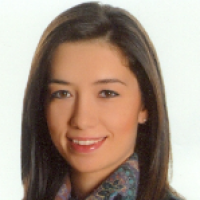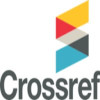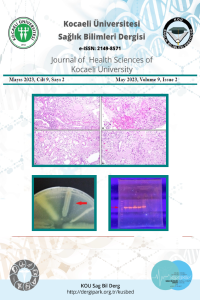Research Article
Aim & Scope
The Journal of Health Sciences of Kocaeli University is a double-blind peer review, independent and objective, unbiased, open access, triannual (January, May and September) online scientific publication of Institute of Health Sciences of Kocaeli University. The journal seeks articles related to the multidiciplinary health sciences and medicine. The language of journal is English and Turkish. DOI ID (DOI prefix: 10.30934/kusbed.[Manuscript ID]) numbers are given to all manuscripts. Total of three issues published in a year form a volume of the journal.
The Journal of Health Sciences of Kocaeli University is an open access, multidisciplinary scientific journal having a double-blind, peer-reviewed policy.
The journal is publishing experimental and prospective/retrospective clinical studies, original research, invited reviews, case report and letters to the editor prepared in accordance with the ethical rules.
Manuscripts have been sent to the KOU Sag Bil Derg should not been published previously, and/or not submitted and/or being considered for publication elsewhere. The name, place and the date of the meeting should be written as footnote if manuscripts were presented in any scientific meeting.
The full text files (PDF) of all published articles can be accessed free of charge from http://dergipark.org.tr/kusbed. KOU Sag Bil Derg has adopted to provide open-access journal policy defined by Budapest Open Access Initiative with the publication.
Author Guidelines
Kocaeli Üniversitesi Sağlık Bilimleri Dergisi will start publishing only in English as of January 2023. Therefore, the articles to be sent after 15.04.2022 must be written in English.
Author Guideline
A. General Information About The Journal
➢A 1.1 Manuscript Submission
1. Before you make your submission, you should ensure that you have all of the related information (e.g., Name-surname, full address, affiliation) and the ORCID numbers of the authors. Unless you have this information, your submission process will not proceed.
2. Your manuscript should include three word documents: 1. Title page 2. Main text. In the title page, you should mention the names, affiliations and contact information of the authors. The main text should not involve the author names. Please make sure that you have prepared these two documents.
3. On your internet server, open this address http://dergipark.org.tr/kusbed
4. After you sign in DergiPark, click on “Submit a manuscript”
5. Please download copyright form and after you have filled in, upload it by clicking on “file” button.
6. Click “Save & next”.
7. Fill in the asked information (e.g., type of document, topic, language, keywords, abstract) on the web page.
8. Provide information about the authors (e.g., name, affiliation, country, ORCID number)
9. If there are more than one author, click on “Add author” button and provide related information.
10. Please list all of your references in the space provided leaving a line blank between each reference.
11. By clicking on “File”, upload your manuscript which do not have involve the names of the authors. Name the file as 'full text' by checking the 'I want to enter the file title textually' below.
12. Click on “Add new file” to upload your “title page” document that have the information about the authors. Name the file as 'title page' by checking the 'I want to enter the file title textually' below than click on “Save”.
13. On the page, you may prefer to write DOI numbers of your references. If you do not, please click on “Save” to proceed.
14. If you want, you can add your note for the editor on the opened preview page
15. Please check your submission preview page. You can make corrections by clicking on ‘Go on editing’.
16. If the information displayed in the preview is accurate and complete, please click on ‘Submit’. After this stage, you cannot make any corrections (Send your change requests to the journal secretary).
For more information please visit https://dergipark.org.tr/kusbed/post/makale-gondermede-adimlar-ve-eklenecek-dosyalar
➢A 1.2 Publishing Policy
Kocaeli Üniversitesi Sağlık Bilimleri Dergisi - Journal of Health Sciences of Kocaeli University is an Open Access journal. Everybody can reach the content of the journal via internet without any payment. When you make manuscript submissions and give the right for publishing to KOU Sag Bil Derg, your articles will be published under the Creative Commons Attribution-ShareAlike 4.0 International License. By this way, the other researchers will reach, modify and publish your content by making attribution to the original material. User, reader and author(s) must distribute the article under the same license as the original. Please follow the link to get more knowledge about CCL: https://creativecommons.org/licenses/by-sa/4.0/
➢A 1.3 Scope of the Journal
The Kocaeli Universitesi Saglık Bilimleri Dergisi is published electronically 3 times a year by the Institute of Health Sciences of Kocaeli University and accepts English or Turkish-language manuscripts in all fields of medicine and related health sciences. Contribution is open to researchers of all nationalities. The following types of papers are welcome: original articles (for the presentation of clinical and laboratory studies), case reports, invited review articles, and letters to the editor.
Description
As an international, multi-disciplinary, peer-reviewed journal, Kocaeli Üniversitesi Sağlık Bilimleri Dergisi | Journal of Health Sciences of Kocaeli University provides a platform for the publication of the most advanced scientific research in the areas of basic and clinical medical sciences, dentistry, nursery and midwifery, clinical psychology & psychiatry, physiotherapy and rehabilitation.
➢A 2.1 Publication Policy and Manuscript Evaluation Process
a. Double-blinded peer-reviewed method
Kocaeli Üniversitesi Sağlık Bilimleri Dergisi (KOU Sag Bil Derg) is published 3 times a year (quarterly; January, May, September) and it is double-blinded peer-reviewed system international journal.
Editorial and publication processes of the KOU Sag Bil Derg are shaped in accordance with the guidelines of the international organizations such as the International Council of Medical Journal Editors (ICMJE), the World Association of Medical Editors (WAME), the Council of Science Editors (CSE), the Committee on Publication Ethics (COPE), the European Association of Science Editors (EASE). The journal is in conformity with Principles of Transparency and Best Practice in Scholarly Publishing (doaj.org/bestpractice). Processing and publication is free of charge with the Kocaeli Üniversitesi Sağlık Bilimleri Dergisi. Authors are not charged a fee at any point during the publication process. For the evaluation of papers, at least three referees are determined considering the content of the manuscript or the professional scientific area of the referees. In this step, referee assessment form is sent via internet without names. The personal data of the referee is not shown since the double-blind peer-reviewed method is used. Upon request, a written document given to referee as the referee for that contribute to the journal. The authors cannot directly contact with the referees. The referee’s evaluation report is sent by the journal management system. The evaluation forms and the referees’ reports are sent to the corresponding author(s) by the section editor.
b. Decision process
After the referees’ evaluation process, the editor decides whether the manuscript will be accepted or not considering the accuracy and the importance of the work, referee’s reports, copyright infringement and ethical problems such as plagiarism.
As the editor decides about the manuscript, he or she may require the suggestions of the other member of editorial board or referees.
c. Instancy
A referee invited to the journal for the evaluation of a manuscript should inform the editor about the acceptance in 5 days. The referee should complete the evaluation in 15 days and the corresponding author(s) should download the revised manuscript in 15 days. The requested reading time for the last version of the manuscript by the corresponding author is only 3 days.
d. Confidentiality (Privacy Statement)
Personal information such as names and electronic mail addresses are only used for the scientific purposes of the journal. Other than these purposes this information will not be used and will not be shared with the third parties.
The manuscripts sent to referees for assessment are kept as confidential documents. The manuscripts are not shown to other people and the contents of them should not be discussed. If it is necessary, reviewers may need suggestions from their colleagues after editorial permission. The editor may give that permission only in the presence of exceptional condition. The confidentiality rules are also valid for the referees not accepting the assessment of the manuscript.
e. Objectivity principles
In the evaluation process, no personal criticism of the authors should be done. The evaluations should contribute to the development of works and be objective.
f. Citation to reference
The referees should inform the authors if there are any citations that are not referred in the manuscript. The referees should pay particular attention to the citations that do not refer to the subject or to the citations that coincide with similar works. The referees should inform the editors if any publications that have similarity to any previously published work or information are recognized.
g. Information and Conflict of Interest
The referees should not agree to make any evaluation if they have any relation with any author, company or institution in which they are tasked to evaluate their work and inform the editor. The referees may not use the unpublished works or sections of the works submitted for evaluation in their own work without the written consent of the author(s). The information and ideas obtained during the assessment should be kept secret by the referees and should not be used for their own interests. These rules include those who refuse the manuscript assessment.
h. Prevention of Plagiarism
Kocaeli Üniversitesi Sağlık Bilimleri Dergisi reports the similarity rates of the articles through the iThenticate and Turnitin programs and shows the care and sensitivity required to prevent plagiarism.
➢A 2.2 Submission Procedures
Manuscripts can only be submitted through the journal’s online manuscript submission and evaluation system, available at https://dergipark.org.tr/tr/journal/1601/submission/start. You will be guided stepwise through the creation and uploading of the various files.
Manuscripts submitted to the journal will first go through a technical evaluation process where the editorial office staff will ensure that the manuscript has been prepared and submitted in accordance with the journal’s guidelines. Submissions that do not conform to the journal’s guidelines will be returned to the submitting author with technical correction requests.
Authors are required to submit the following during the initial submission:
§ Cover Letter
§ Title Page
§ Copyright Transfer Form,
§ Author Contributions Form, and
§ ICMJE Potential Conflict of Interest Disclosure Form (should be completed by all contributing authors)
There are no page charges.
Only unpublished papers (including conference proceedings which that exceed >400 words) that are not under review for publication elsewhere can be submitted. Kocaeli Üniversitesi Sağlık Bilimleri Dergisi does not accept multiple and duplicate submissions even though the previous one was published in a different language. The authors are responsible for the scientific content of the material to be sent for publication. Authors are responsible for the compliance with ethical standards that defined in WMA Declaration of Helsinki.
http://www.icmje.org/about-icmje/faqs/conflict-of-interest-disclosure-forms/
The copyright release form, which can be found at http://dergipark.g.tr/kusbed after you started submission, and it must be signed by the corresponding author on behalf of all authors and must accompany all papers submitted. Please see the form for additional copyright details. After a manuscript has been submitted, it is not possible for authors to be added or removed or for the order of authors to be changed. If authors do so, their submission will be cancelled. The peer review process is double-blind, i.e. both authors and referees are kept anonymous. Manuscripts may be rejected without peer review by the editor-in-chief if they do not comply with the instructions to authors or if they are beyond the scope of the journal. Any manuscript that does not conform to the Uniform Requirements for Manuscripts Submitted to Biomedical Journals, as reported at http://www.icmje.org/icmje-recommendations.pdf, will also be rejected. After a manuscript has been accepted for publication, i.e. after referee-recommended revisions are complete, the author will not be permitted to make changes that constitute departures from the manuscript that was accepted by the editor. Before publication, the galley proofs are always sent to the authors for corrections. Mistakes or omissions that occur due to some negligence on our part during final printing will be rectified in an errata section in a later issue. This does not include those errors left uncorrected by the author in the galley proof.
The use of someone else’s ideas or words in their original form or slightly changed without a proper citation is considered plagiarism and will not be tolerated. Even if a citation is given, if quotation marks are not placed around words taken directly from another author’s work, the author is still guilty of plagiarism. Reuse of the author’s own previously published words, with or without a citation, is regarded as self-plagiarism. All manuscripts received are submitted to iThenticate®, a plagiarism checking system, which compares the content of the manuscript with a vast database of web pages and academic publications. Manuscripts judged to be plagiarised or self-plagiarised, based on the iThenticate® report or Turnitin for theses, will not be considered for publication. It is suggested for you to determine the ratio in the iThenticate® report of your manuscript before you submit it. Editorial board decided that this ratio should be less than 30, and if not, then the manuscripts are not accepted and sent back to author(s).
All experimental or clinical researches done in humans or animals should follow the ethical rules. The ethical approval form must be sent and the number of approval must be given in the manuscript. The ethical problems belong only to the author(s).
The copyright fee is not paid to all authors.
➢A 2.3 Preparation of Manuscript Style and format:
Manuscripts should be submitted to http://dergipark.org.tr/kusbed as Microsoft word file in Times New Roman font. All manuscripts including references should be typed in 12 font size,one and a half (1.5) line space and justified. Upon submission, the copyright release form should be filled and downloaded. The manuscript submissions without a copyright release form will not be evaluated.
Each page of main text of the manuscript should be numbered on the right hand side. Manuscripts should be written in Turkish or English. Contributors who are not native English speakers are strongly advised to ensure that a colleague fluent in the English language or a professional language editor has reviewed their manuscript. Repetitive use of long sentences and passive voice should be avoided. It is strongly recommended that the text be run through computer spelling and grammar programs.
➢A 2.4 Symbols, Units, And Abbreviations:
In general, the journal follows the conventions of Scientific Style and Format, The CSE Manual for Authors, Editors, and Publishers, Council of Science Editors, Reston, VA, USA (7th ed.). If symbols such asp, ×, µ, η, or ν are used, they should be added using the Symbols menu of Word. Degree symbols (°) must be used from the Symbol menu, not superscripted letter “o” or number 0. Multiplication symbols must be used (×), not the letter x. Spaces must be inserted between numbers and units (e.g., 3 kg), but not between numbers and mathematical symbols (+, –, ±, ×, =, <, >) and between numbers and percent symbols (e.g., 45%). Please use International System (SI) units. All abbreviations and acronyms should be defined at first mention. Thereafter, generic names should be abbreviated as appropriate without altering the species name.
➢A 2.5 Ethical Rules
The editorial and publishing processes in the journal are shaped in accordance with the guidelines of the International Committee of Medical Journal Editors (ICMJE), Committee on Publication Ethics (COPE), Council of Science Editors (CSE), World Association of Medical Editors (WAME), European Association of Science Editors (EASE), and National Information Standards Organization (NISO). The journal is in compliance with the Principles of Transparency and Best Practice in Scholarly Publishing (doaj.org/bestpractice).
The authors ought to prepare their manuscripts in conpliance with ICMJE-Recommendations for the Conduct, Reporting, Editing, and Publication of Scholarly Work in Medical Journals (updated in December 2018 - http://www.icmje.org/icmje-recommendations.pdf). Authors are required to prepare manuscripts in accordance with the CONSORT guidelines for randomized research studies, STROBE guidelines for observational original research studies, STARD guidelines for studies on diagnostic accuracy, PRISMA guidelines for systematic reviews and meta-analysis, ARRIVE guidelines for experimental animal studies, and TREND guidelines for non-randomized public behavior.
In manuscripts based on scanning of archieve records, a consent form is needed that shows the permission for retrospective work and signed by Head of the Department, hospital manager or clinic manager.
B-Instructions to Authors
➢ B 1 Types of Manuscripts
➢ B 1.1 Original Article
It should consists of “Introduction”, “Methods”, “Results” and “Discussion”. The conclusion may be written as a last paragraph of discussion, there is no need to add a separate section for conclusion. The whole length of text should be maximum 5 000 words (except abstract, acknowledgements and references). The numbers of references should be maximum 50. Also, scientific names should be spelled in italics throughout the text.
➢ B 1.1.2 Systematic Review
It is included in the research article. It is formed by scanning the studies published in the related field in a systematic and comprehensive manner, determining which studies will be included in the review within the framework of various objective acceptance and rejection criteria and synthesizing the information in the relevant subject. Authors should use standard checklists for systematic review and meta-analysis when submitting their drafts, indicating that they comply with the PRISMA (http://www.prisma-statement.org/) statement. . It should be up-to-date to include the latest medical literature. It is preferable that the author has published articles on that subject.
➢ B 1.1.3 Metanalysis
A type of statistical literature developed by combining the findings of at least two studies to show the effect of a particular situation with a single estimator. By combining the findings of multiple studies, the validity and reliability of the results will be strengthened.
➢ B 1.2 Short Communication (Brief Report)
Short Communications are short, peer-reviewed articles focusing on a high-quality, hypothesis-driven, self-contained piece of original research and/or the proposal of a new theory or concept based on existing research (note that short communication is not original full text article!). They should not be preliminary reports or contain purely incremental data and should be of significance and broad interest to the field of health sciences.
The total length of the article (including the main text and figure legends, but not the title page, abstract, materials and methods section or reference list) should not exceed 2 500 words, with a 250-word abstract and a maximum of 3 display items (figures/tables). Supplementary information (figures, tables, movies, datasets) may be published online at the discretion of the editor and reviewers (a strict limit of 50 Mb of supplementary material exists per article).
Articles focusing on original research should be divided into the following sections, in this order: ‘Introduction’, ‘Methods’, ‘Results’, and ‘Discussion’ as original article designed.
➢ B 1.3 Invited Review
The journal sends invitations to the selected authors who have extensive experience and publications on the review subjects to write reviews that will guide future studies.
Journal attaches the importance that the authors of reviews must be a scientific authority for the topic of the manuscript, they must document their relevant own experience for the area by listing their own publications in the cover letter. Manuscript submissions that fail to list relevant own publications in the cover letter will be returned to authors.
The word count of the whole text must be 6,000 words maximum except for abstract and references with a page number upper limit of 20. The author(s) must have at least one paper published in a journal indexed in SCI-E on the subject related to the topic of the review. The abstract should be as one paragraph and written without a section. The numbers of references should be maximum 100.
➢ B 1.4 Case Report
The word count must be 1,500 words maximum excluding abstract, acknowledgement and references. Case reports should consist of abstract, keywords, introduction, case report and discussion sections. The number of references and pages should be limited to 10. Figures or Tables should follow the main text in separate pages.
➢ B 1.5 Letter to Editor
It should consist of 1 000 words maximum except for abstract and references. One tables or figures are included. If it is written referring to another article, the number and the date should also be added. The name(s), affiliation(s) and address(es) of author(s) should appear at the end of the text. The number of references and pages should be limited to five.
➢B 2 Manuscript Arrangement
Manuscripts should be arranged as follows: “Cover Letter”, “Title page”, “Abstract”, “Keywords”, “Main text”, “Acknowledgements”, “References”, “Tables”,and “Figures”.
1. Cover Letter
2. Title page
3. Manuscript Main File
i. Abstract (max. 250 words)
ii. Introduction
iii. Methods
iv. Results
v. Discussion
Limitations
vii. Conclusion
Acknowledgements; Conflict of Interest; Compliance of Ethical Statement (ethical approval, patient consent…); Financial Disclosure/Funding; Author Contributions
vi. References
vii. Figure legends & Tables
➢B 2.1 Title page
All submissions must include a title page, which is to be uploaded as a separate document. The title page should contain the full title in capital letters (e.g., Urothelial Cancers: Clinical and Imaging Evaluation). The title should be limited to 25 words and must not contain abbreviations. The title should be a brief phrase describing the contents of the paper. Titles are often used in information-retrieval systems. Avoid abbreviations and formulae where possible.
Capitalization of the title: Capitalize the first letter of each major word in titles and subtitles. Do not capitalize articles (eg, a, an, the), prepositions of 3 or fewer letters, coordinating conjunctions (and, or, for, nor, but), or the to in infinitives. Do capitalize a 2-letter verb, such as Is or Be. Exceptions are made for some expressions, such as compound terms from languages other than English and phrasal verbs: ‘Ethical Questions Surrounding In Vitro Fertilization Permanent Duplex Surveillance of In Situ Saphenous Vein Bypasses Choice of Stents and End Points for Treatment of De Novo Coronary Artery Lesions Weighing In on Bariatric Surgery’. When the manuscript is in Turkish, the title in English should be written in italics and vice versa. The first and the family names of the authors should be written in small letters with the first letters capitalized.
Full names and affiliations of all authors should be given clearly with address with zip code, name of country, and the contact details of corresponding author (e-mail address and phone number). In addition, ORCID (Open Researcher and Contributor ID) numbers of all authors should be included on the title page. It should be written in capital letters both in Turkish and in English. Title in English should be written using italic letters for Turkish manuscripts and vice versa. The first and the family names of the authors should be written in small letters as the first letter being the capital.
The full names and affiliations of all authors should be given clearly and briefly with theirinstitutions, address with zip code and name of country, and the contact details of corresponding author (E-mail address and telephone). In addition, ORCID (Open Researcher and Contributor ID) numbers of all authors should be included into the title page.
➢B 2.2 Abstract
The abstract should be brief, indicating the purpose/significance of the research, methodology, major findings and the most significant conclusion (s). The abstract shouldnot contain literature citations that refer to the main list of reference attached to the complete article. The abstract should be written as a single paragraph and should be in reported speech format (past tense); complete sentences, active verbs and the third person should be used.
The abstract should be structured to include the study’s “Objective”, “Methods”, “Results”, and “Conclusion” under 4 separate headings. Abstracts of review articles should be a brief overview of the main points from the review. In reviews and case reports, abstract should be written without any sections. The abstract (English and Turkish) should not be more than 300 words.
➢B 2.3 Keywords
The authors must provide 3-6 keywords for indexing purposes and to facilitate the retrieval of articles by search engines. Keywords should be different from the words that make up the title of the article. Keywords should be written below the abstracts both inTurkish andEnglish. Acronyms should be avoided. For English keywords, always try to use terms from the Medical Subjects Headings list from Index Medicus (www.nlm.nih.gov/mesh/MBrowser.html). For Turkish keywords, terms from Turkish Scientific Terms (www.bilimterimleri.com) should be used.
➢B 2.4 Main text
➢B 2.4.1 Introduction
The introductionshould be clear and concise, with relevant references on the study subject and the proposed approach or solution. There should be no subheadings. Excessive citation of literature should be avoided. Only necessary and the latest citations of literature that are required to indicate the reason forthe research undertaken and the essential background should be given.
➢B 2.4.2 Methods
Explain clearly but concisely your clinical, technical, or experimental procedures. A precise description of the selection of your observational or experimental subjects (for example patients or laboratory animals including controls) must be presented. Experimental research involving human or animals should be approved by ethical committiee. All chemicals and drugs used must be identified correctly, including the generic names, the name of the manufacturer, city and country in parenthesis. The techniques or methodology adopted should be supported with standard references. Briefly describe methods that have been published but are not well known as well as new or substantially modified methods. Description of established procedures are unnecessary. Apparatus should be described only is it is non-standard; commercially available apparatus used should be stated (including manufacturers’ name, address in parenthesis). Only SI units should be used for each measurements.
➢B 2.4.3 Results
The result section should provide complete details of the experiment that are required to support the conclusion of the study. The results should be written in the past tense when describing findings in authors experiments. Previously published findings should be written in the present tense. Speculation and the detailed interpretation of the data should not be included in the results but should be put into the discussion section.
➢B 2.4.4 Discussion
Statements from the “Introduction” and “Conclusion” sections should not be repeated here.
Limitations: “Limitations”, as the subtitle of the discussion is the section by which the author (s) express limitations on their work.
➢B 2.4.5 Conclusion
As the final section of the main text of the article should highlight the main conclusions of the study.
Acknowledgements
All acknowledgements, poster/oral presentations, financial supports, grants, technical supports and the conflict of interest should be mentioned at the end of the text.
Financial Disclosure/Funding
The type of Project or the financial support such as scientific projects of University, TUBITAK projects etc. should be added at the end of the text including the numbers and the year of the projects.
➢B 2.4.5 Tables and Figures
The visual presentations like photographs, graphics, picturesetc. must be labelled “Figures”. Whereas, the “Tables” shows the classifieddata.Tables should be added after the “References” section. Figure legends should be placed into the end of the main text. Figures should be uploaded as a separate file following the Dergipark System.
All tables and figures must have a caption and/or legend and be numbered (e.g., Table 1., Figure 2.), unless there is only one table or figure, in which case it should be labelled “Table” or “Figure” with no numbering. Captions mustbe written in sentence case (e.g., Figure 1. Macroscopic appearance of the samples.). The font used in the figures should beTimes New Roman. If symbols such as ×, μ, η, or ν are used, they should be added using the Symbols menu of Word.
All tables and figures must be numbered consecutively as they are referred in the text. Please refer to tablesand figures with capitalisation and unabbreviated (e.g., “As shown in Figure 2. …”, and not “Fig. 2” or “figure 2”).
The resolution of images should not be less than 118 pixels/cm when width is set to 16 cm. Images must bescanned at 300 dpi resolution and submitted in .jpeg, .png or .tif format.
Graphics and diagrams must be drawn with a line weight between 0.5 and 1 point. Scanned or photocopied graphs anddiagrams are not accepted.
Charts must be prepared in 2 dimensions unless required by the data used. Charts unnecessarily prepared in3 dimensions are not accepted.
Figures that are charts, diagrams, or drawings must be submitted in a modifiable format, i.e. our graphicspersonnel should be able to modify them. Therefore, if the program with which the figure is drawn has a “Save as”option, it must be saved as .pdf. If the “Save as” option does not include .pdf extension, the figure must becopied and pasted into a blank Microsoft Word document as an editable object. It must not be pasted as an imagefile (.tiff or.jpeg) unless it is a photograph.
Tables and figures, including caption, title, column heads, and footnotes, must not exceed 16 × 20 cm andshould be no smaller than 8 cm in width. For all tables, please use Word’s “Create Table” feature, with no tabbedtext or tables created with spaces and drawn lines. Please do not duplicate information that is already presented inthe figures.
Tables must be clearly typed, each on a separate sheet, and single-spaced. Tables may be continued on anothersheet if necessary, but the dimensions stated above still apply.
Tables should be arranged as a horizontal borderline as well as below the last line. Moreover, there sould be vertical line on the right of first column on the left hand site. Abbreviations used in the tables such as (*) should be explained below the table in 10 font size.
In Tables written in Turkish, decimal numbers should be written with comma, however in English text, decimal numbers should be written with dots. Percentages (%) should be placed in front of the numbers without space and behind the numbers in Turkish and English text, respectively.
Example for a Table:
Table1. The reasons of not applying to general practioner for the first application.
|
The reasons
|
n* |
% |
|
Only Psychiatrist can do it |
47 |
53.4 |
|
No information about general practioner |
17 |
19.3 |
|
Parents decision |
12 |
13.6 |
|
Not preferred |
12 |
13.6 |
*Total number of patients.
➢References
Citations in the text
References should be identified by numbers assuperscript, for example, “The results were as follows:4
If there are more than one references, separate the numbers with comma, for example, “Several interventions have been successful at increasing compliance.11,14”
In following journals, first and the last numbers should be seperated by “-“ , for example: Diabetes mellitus is associated with a high risk of foot ulcers1-3 or “As reported previously,1,3-6”
Do not include personal communications, unpublished data, or other unpublished materials as references, although such material may be inserted (in parentheses) in the text. In the case of publications in languages other than English, the published English title should be provided if one exists, with an annotation such as “(article inTurkish with an abstract in English)”. If the publication was not published with an English title, provide the original title only; do not provide a self-translation. A short title for use as a running head (not to exceed 30 characters in length, including spaces between words) is needed. References should be formatted as follows (please note the punctuationand capitalisation):
The list of references
At the end of the paper, list should be given in order of their first appearance in the text. All authors should be included in reference lists unless there are more than 6, in which case only the first 3 should be given, followed by “et al.” in English and “ve ark.” in Turkish references.
The number of references should not be more than 60 in original articles, not more than 100 in review articles, not more than 20 in case reports and not more than 5 in letter to editor. The journal requires DOI numbers, when available, to be included in all references. Personal experiences and researches without a DOI number should not be used.
In order to arrange the reference list easly, our journal suggest the use of reference arrangement programmes such as EndNote or Mendeley etc.).
For a reference in the reference list, the surname of author, the first letter of author’s name, the title of the reference, the name of the journal, the year of the journal, the numbers of its volume, issue and pages should be written. The name of the journal should be abbreviated as in AMA (American Medical Association) ((http://library.nymc.edu/informatics/amastyle.cfm). If the abbreviation is not avalible, whole name of the journal should be written.
i. Articles
Online Journal Articles
- Author’s name(s). Title of the article and subtitle. Abbreviated name of journal. Year;Volume number (issue number, part or supplement number when pertinent):Page number(s). DOI or URL. Date published (if available). Date updated (if applicable). Date accessed (if citing with a URL).
*note if the doi number is available, use the doi instead of the url. If the doi is used, date accessed is not required.
If a journal from a website is used, the date of publishing is used. Usually, there is no numbers of volume, issue or pages. The web adress and date of download should be given.
Example with doi number:
- Link M. Evaluation and initial treatment of supraventricular tachycardia. New England Journal of Medicine. October 11, 2012;367(15):1438-1448. doi:1056/NEJMcp1111259.
- Gage BF, Fihn SD, White RH. Management and dosing of warfarin therapy. Am J Med. 2000;109(6):481-488. doi:10.1016/S0002-9343(00)00545-3.
*note use the URL from the journal publisher's website
Example without doi number:
- Gronbech JM, Andersen S, Ryg J, Masud T. Novel use of the Nintendo Wii board for measuring isometric lower limb strength: a reproducible and valid method in older adults. PLoS ONE. 2015;10(10):1-11. http://journals.plos.org/plosone/article?id=10.1371/journal.pone.0138660. Published October 7, 2015. Accessed October 26, 2016.
Print Journal Articles
- Author’s name(s). Title of the article and subtitle. Abbreviated name of journal. Year; Volume number(issue number, part or supplement number when pertinent): Page number(s).
Example:
- Rainier S, Thomas D, Tokarz D, et al. Myofibrillogenesis regulator 1 gene mutations cause paroxysmal dystonic choreoathetosis. Arch Neurol. 2004; 61(7): 1025-1029.
- Keçeli S, Dündar D, Sönmez TG. Anti-candidal activity of clinical Pseudomonas aeruginosa strains and in vitro inhibition of Candida biofilm formation. Mikrobiyol Bul. 2012;46(1):39-46.
- Debes-Marun CS, Dewald GW, Bryant S, et al. Chromosome abnormalities clustering and its implications for pathogenesis and prognosis in myeloma. Leukemia. 2003;17:427–436.
- Ozcelik F, Oztosun M, Gülsün M, ve ark. İdiopatik trombositopenik purpura ön tanılı bir olguda EDTA’ya bağlı psödotrombositopeni. Turk J Biochem. 2012;37(3):336–339.
If a supplement of a journal is referred, (suppl.) in English and (ES) in Turkish manuscripts should be used.
Example of citing parts on an issue:
- McCormick MC, Kass B, Elixhauser A, Thompson J, Simpson L. Annual report on access to and utilization of health care for children and youth in the United States: 1999. Pediatrics. 2000;105(1, pt 3): 219-230.
Newspaper Articles
- Author name. Title of article. Name of newspaper. Date:Section (if applicable) Page number.
Example:
- Wolfe W. State's mail-order drug plan launched. Minneapolis Star Tribune. May 14, 2004:1B.
*note: for online newspapers use the same format just add the URL at the end
Manuscript Accepted for Publication (In Press)
1. Kuenze G, Bonneau R, Leman JK, Meiler J. Integrative Protein Modeling in RosettaNMR from Sparse Paramagnetic Restraints. Structure. In press. September 2019. doi:10.1016/j.str.2019.08.012
2. Brown JE. The relation between citations and references. J Med Style. In press.
ii. Book
Print Books
Author's name(s). Chapter title. In: Surname and first and middle initials of book authors or editors or translators if any. Title of book and subtitle. Volume number. Edition. Place of publication: Name of publisher; year of copyright: Page numbers when cited.
- Strunk W Jr., White EB. The Elements of Style. 4th ed. New York, NY: Longman; 2000.
- Harmening D. Modern Blood Banking & Transfusion Practices. 6th ed. Philadelphia, PA: F.A. Davis Company; 2012.
Reference to an entire book
- Modlin J, Jenkins P. Decision Analysis in planning for a Polio Outbreak in the United States. San Francisco, CA: Pediatric Academic Societies; 2004.
Reference to chapter in a book
- Solensky R. Drug Allergy: desensitization and treatment of reactions to antibiotics and aspirin. In: Lockey P, ed. Allergens and Allergen Immunotherapy. 3rd ed. New York, NY: Marcel Dekker; 2004:585-606.
- McCall RE, Tankersley CM. Phlebotomy and specimen considerations. In: Bishop ML, Fody EP, Schoeff LE, editors. Clinical Chemistry: Techniques, Principles, Correlations. Philadelphia, PA, USA: Lippincott Williams & Williams; 2010:33-73.
Editors and Translators
Reference to edited book
1. Adkinson N, Yunginger J, Busse W, Bochner B, Holgate S, Middleton E, eds. Middleton’s Allergy: Principles and Practice. 6th ed. St Louis, MO: Mosby; 2003.
Volume Number
- US Department of Health and Human Services. Understanding and Improving Health and Objectives for Improving Health. Vol 1. 2nd ed. Washington, DC: US Dept of Health and Human Services; 2000.
Edition Number
- Glinoer D. Thyroid disease during pregnancy. In: Braverman LE, Utiger RE, eds. Werner and Ingbar's The Thyroid: A Fundamental and Clinical Text. 8th ed. Philadelphia, PA: Lippincott Williams & Wilkins; 2000:1013-1027.
E-Books
Author's name(s). Title of book and subtitle. [Edition number, if second ed or above] ed. City, State (or country) of publisher: Publisher's name; copyright year. URL: http://xxxxx, Accessed (date).
Example
- Kasper D, Fauci A, Hauser S, Longo D, Jameson JL, Loscalzo J. Harrison's Principles of Internal Medicine. 19th ed. New York, NY: McGraw-Hill; 2014. http://accessmedicine.mhmedical.com/content.aspx?bookid=1130§ionid=79720773. Accessed June 14, 2017.
E-Book Chapters
Author(s). Chapter title. In: Editor(s). Book Title. [Edition number, if it is the second edition or above] ed. City, State (or country) of publisher: Publisher's name; copyright year:inclusive pages. URL: [provide URL and verify that the link still works]. Accessed [date].
Example
- Resnick NM. Geriatric medicine. In: Braunwald E, Fauci AS, Isselbacher KJ, et al, eds. Harrison's Online. Based on: Braunwald E, Hauser SL, Fauci AS, Kasper DL, Longo DL, Jameson JL, eds. Harrison's Principles of Internal Medicine. 15th ed. New York, NY: McGraw-Hill; 2001. http://www.hsls.pitt.edu/resources/documentation/harrisonsinfo.html. Accessed December 6, 2005.
iii. Websites
Author(s), if given. Title of the specific item referenced (if not available, use name of the organization responsible for the site). Name of the Web site. URL [provide URL and verify that the link still works as close as possible to the publication]. Published [date]. Updated [date]. Accessed [date].
Example
- International Society of Infectious Diseases. ProMED-mail Web site. http://www.promedmail.org. Accessed April 29, 2004.
iv. Government or Agency Bulletins
In print
- Author name(s). Title of Bulletin. Place of publication: Name of issuing bureau, agency, department, or other governmental division; date of publication. Page numbers if specified. Publication number if available.
Example
- Johnston LD, O'Malley PM, Bachman JG. Monitoring the Future: National Survey Results on Adolescent Drug Use: Overview of Key Findings. Bethesda, MD: National Institute on Drug Abuse, US Dept of Health and Human Services; 2003.
Online version example
- World Health Organization. Equitable access to essential medicines: a framework for collective action. http://whqlibdoc.who.int/hq/2004/WHO_EDM_2004.4.pdf. Published March 2004. Accessed December 6, 2005.
v. The Other Sources
Audio & Visual Materials
DVDs
- Author, AA. Title [DVD]. Place of publication: Publisher or distributor; year of publication.
Example:
- Acland RD. Acland's DVD Atlas of Human Anatomy [DVD]. Philadelphia, PA: Lippincott Williams & Wilkins; 2003.
Databases
- Author(s). Title of database. Publisher's location: Publisher's name; Year of publication. URL. Date accessed.
Example
- PDQ: NCI's Comprehensive Cancer Database. Bethesda, MD: National Cancer Institute; 1996. http://www.cancer.gov/cancerinfo/pdq/cancerdatabase. Updated December 18, 2001. Accessed April 29, 2004.
YouTube Videos
- Author if known. Title [Video]. YouTube. http://www.xxxx. Published date. Accessed date.
Example
- University of California, Berkeley. Integrative Biology 131 - Lecture 01: Organization of the Body [Video]. YouTube. https://www.youtube.com/watch?v=S9WtBRNydso&index=2&list=PLgHFaI-Y9V8BBTPc2bD7VgDTgRZT5nthX Published August 20, 2007. Accessed July 2, 2012.
Dictionaries
- Author's name(s). Title. Edition. Place of publication: Name of publisher; year of copyright: Page numbers when cited.
Example
- Stedman's medical dictionary. 28th ed. Baltimore: Lippincott Williams & Wilkins; 2005: 1784.
Encyclopedias
- Author(s). Title of entry. In: Editors or authors. Title of encyclopedia. Edition. Place of publication: Publisher; year:page number.
Example
- Wallace RJ Jr, Griffith DE. Antimycobacterial agents. In: Kasper DL, Fauci AS, Longo DL, Braunwald E, Hauser SL, Jameson JL, eds. Harrison's Principles of Internal Medicine. 16th ed. New York, NY: McGraw-Hill; 2005:946.
Access Medicine Book Chapter
- Author(s). Title of chapter. In: Editor AA, Editor BB, Editor CC. eds. Title of book, edition. Publication location: Publisher; year. URL. Accessed date.
Example
- LeBlond RF, Brown DD, DeGowin RL. Vital signs, anthropometric data, and pain. In: LeBlond RF, Brown DD, DeGowin RL. eds. DeGowin's Diagnostic Examination, 9e. New York, NY: McGraw-Hill; 2009. http://accessmedicine.mhmedical.com/content.aspx?bookid=370&Sectionid=4049949 7. Accessed July 31, 2014.
- Author(s). Title of chapter. In: Editor AA, Editor BB, Editor CC. eds. Title of book, edition. Publication location: Publisher; year. URL. Accessed date.
Example
- De Prisco G, Celinski S, Spack CW. Abdominal Abscesses and Gastrointestinal Fistulas. In: Feldman M, Friedman LS, Brandt LJ. eds. Sleisenger and Fordtran's Gastrointestinal and Liver Disease, 10th ed. Philadelphia, PA: Elsevier; 2016. https://www.clinicalkey.com/#!/content/book/3-s2.0-B9781455746927000284?scrollTo=%23hl0000371. Accessed July 2, 2016.
UpToDate Topic
- Author(s). Title of topic. In: UpToDate, Editor AA (Ed), UpToDate, Publishing location. (Accessed on date.)
Example
- Marion, DW. Diaphragmatic pacing. In: UpToDate, Post TW (Ed), UpToDate, Waltham, MA. (Accessed on November 25, 2013.)
vi. Conference proceedings | Presentations
Example
1. Diamond M. Lymphatic system. Lecture presented at: University of California, Berkeley; September 26, 2005; Berkeley, CA.
2. Weber KJ, Lee J, Decresce R, Subjasis M, Prinz R. Intraoperative PTH monitoring in parathyroid hyperplasia requires stricter criteria for success. Paper presented at: 25th Annual American Association of Endocrine Surgeons Meeting; April 6, 2004; Charlottesville, VA.
3. Chu H, Rosenthal M. Search engines for the World Wide Web: a comparative study and evaluation methodology. Paper presented at: American Society for Information Science Annual Conference; October 19-24, 1996; Baltimore, MD. http://www.asis.org/annual-96/electronicproceedings/chu.html. Accessed February 26, 2004.
vii. Theses / Dissertations
1. Fenster SD. Cloning and Characterization of Piccolo, a Novel Component of the Presynaptic Cytoskeletal Matrix [dissertation]. Birmingham: University of Alabama; 2000.
2. Bawazeer NM. Vitamin B12 and folate status during pregnancy among Saudi population. [dissertation], University of Warwick, Warwick, UK, 2011.
viii. Specific Record of an Online Database
1. Acetaminophen poisoning. In DynaMed [database online]. EBSCO Information Services. http://search.ebscohost.com/login.aspx?direct=true&site=DynaMed&id=113862. Updated March 09, 2010. Accessed March 23, 2010.
ix. Patent
1. Rabiner RA, Hare BA, inventors; OmniSonics Medical Technologies Inc, assignee. Apparatus for removing plaque from blood vessels using ultrasonic energy. US patent 6,866,670. March 15, 2005.
Ethical Principles and Publication Policy
The Journal of Health Sciences of Kocaeli University is an open access, multidisciplinary scientific journal having a double-blind, peer-reviewed policy. The journal carries out academic publishing in the field of health sciences and medicine.
The journal aims to contribute to the literature and all disciplines in the field of health by publishing experimental and clinical studies, original research, review, case report and letter to the editor prepared in accordance with ethical rules.
The Journal Editorial Board acts in accordance with the principles and guidelines of ICMJE (International Committee of Medical Journal Editors) and COPE (Committee on Publication Ethics). The journal conforms to the Principles of Transparency and Best Practice in Scholarly Publishing (doaj.org/bestpractice).
The journal does not charge any article fee during the submission, evaluation and publication process. There is not an open access publication fee for authors.
Authors' credentials and e-mail addresses are in no way used for other purposes. Authors may publish their articles on their personal or corporate websites by linking them to the appropraite cite and library rules.
All responsibilities regarding the articles published in the Journal of Health Sciences of Kocaeli University belong to the author.
Price Policy
Processing and publication is free of charge with the Kocaeli Üniversitesi Sağlık Bilimleri Dergisi. Authors are not charged a fee at any point during the publication process.
Indexes
Citation Indexes
Other Indexes
Journal Boards
Editor-in-Chief

Publishing Coordination Unit

Editorial Board


I was born and raised in Turkey, where I embarked on a journey of academic and professional growth that would shape my identity as a histologician and embryologist. My career path has been deeply intertwined with my passion for medicine, teaching, and scientific inquiry. Currently, I am privileged to serve as an academic (Associate at Dicle University, a role that allows me to contribute to the education of future medical professionals while pursuing research that advances our understanding of health and disease.
Academic and Professional Journey
My professional life is grounded in histology and embryology. Alongside my scientific work, I have embraced the role of a teacher, sharing my knowledge and experience with medical students at the Faculty of Medicine. This dual responsibility of caregiving and education is both a challenge and a source of immense fulfillment.

 Web
Web


Ayimgül Uzunyol, Lisans eğitimini 2003 yılında Xinjiang Üniversitesi Biyoteknoloji Bölümünde (Xinjiang /Çin), yüksek lisans eğitimini 2007 yılında Xinjiang Üniversitesi Yaşam bilimi ve teknoloji Enstitüsü Moleküler Biyoloji ve Biyokimya Anabilim Dalında tamamlamıştır. 2012 yılında doktora eğitimini Kocaeli Üniversitesi Fen Bilimleri Enstitüsü Biyomedikal Mühendisliği Anabilim Dalında tamamlamıştır. Yüksek lisans mezuniyetinden sonra Xinjiang Medikal Üniversitesi Geleneksel Uygur Tıbbı Enstitüsünde (Xinjiang /Çin) Doktora Öğr. Gör. olarak görev yapmıştır. 2012 yılına kadar Çin’in Ulusal projelerinde yönetici ve araştırmacı olarak çalışmış ayrıca ulusal ve uluslararası bilimsel etkinliklerde bildirileri ve yayınları bulunmaktadır. Doktora süresince Kocaeli Üniversitesi, Klinik Ve Deneysel Araştırmalar Uygulama Ve Araştırma Merkezinde TÜBITAK projelerinde araştırmacı olarak görev almıştır. Ocak 2022 tarihinden itibaren OSTİM Teknik Üniversitesi Meslek Yüksekokulunda öğretim üyesi olarak çalışmaktadır.

 Web
Web





Gürler Akpınar, lisans eğitimini Uludağ Üniversitesi Biyoloji Bölümü'nde tamamlamıştır. Yüksek lisans ve doktora derecelerini Kocaeli Üniversitesi Tıp Fakültesi Tıbbi Biyoloji Anabilim Dalı'nda almıştır. 2007-2010 yılları arasında ABD’de Pennsylvania Eyalet Üniversitesi’nde, 2015 yılında ise Marshall Üniversitesi’nde memeli mitokondriyal ribozomları üzerine doktora sonrası araştırmalar yürütmüştür.
Akademik kariyerine Kocaeli Üniversitesi'nde öğretim üyesi olarak devam eden Dr. Akpınar, 2018 yılında Tıbbi Biyoloji alanında doçentlik unvanını almış, 2024 yılında ise Kocaeli Üniversitesi Tıp Fakültesi Tıbbi Biyoloji Anabilim Dalı’nda profesör olarak atanmıştır. Halen aynı anabilim dalında görev yapmakta olup, 2DE ve LC-MS/MS tabanlı proteomik çalışmaların yürütüldüğü Kocaeli Üniversitesi Tıbbi Biyoloji Anabilim Dalı Proteomik Laboratuvarı'nın kurucu ortaklarından biridir.
Hücre biyolojisi ve kanser araştırmaları alanında uzmanlaşan Dr. Akpınar, SCIE kapsamında 89 makale yayımlamış olup, proteomik alanındaki çalışmalarına aktif olarak devam etmektedir.



Highly meticulous and focused academic laboratory professional possessing a solid educational foundation in the biological sciences, with extensive expertise in wet lab practices, particularly in the realms of medical biology, molecular biology, and immunobiological techniques. Demonstrates a remarkable history of contributing to academic publications. Assumes accountability for lab management and excels in critical thinking and experimental design. Presently engaged as an assistant professor at Kocaeli University in Turkey.







Editor in Biostatistics

Editor in Publication Ethics
Layout Editor
Advisory Board

Dr. Bekir Çöl, Associate Professor, was born in Muğla and completed his primary, secondary, and high school education in that same province. He completed his undergraduate studies at Hacettepe University's Faculty of Science, Department of Biology, graduating with a Bachelor of Science degree. He subsequently passed the centralized examination for a scholarship provided by the Ministry of Education of Turkey (Law 1426), thereby securing a full scholarship to pursue his education in the United States. He was initially assigned to Marshall University in West Virginia, USA. He subsequently transferred to Virginia Polytechnic Institute and State University in Blacksburg, Virginia, where he obtained his Master's degree in Molecular and Cellular Biology. He subsequently obtained his Ph.D. in the field of molecular genetics from the Department of Biochemistry at the same university. He subsequently held the position of Research Scientist-Post-Doctorate and team leader at the Beadle Research Center in Lincoln, Nebraska, USA, which is one of the world's leading research institutions. His principal area of expertise during his academic training was gene-protein studies and the regulation of gene expression in bacteria, single-celled eukaryotes, and humans.
Upon returning to Mugla, Turkey, as a scholarship recipient of the Ministry of National Education, he commenced his duties as a research assistant at Muğla Sıtkı Koçman University. He subsequently took a leave of absence to complete his military service and resumed his position upon its conclusion. After contributing to various scientific initiatives at the university, he initiated the development of his own laboratories and infrastructure. He secured funding from TUBİTAK, BAP, and BOREN to establish laboratories and operational systems where molecular genetics, biochemistry, molecular microbiology, proteomics, and genomics experiments could be conducted. This was primarily achieved through twelve high-budget projects, numerous BAP projects, collaborative efforts, and personal resources.
In his capacity as a faculty member, he has overseen the completion of a total of 19 theses (15 at the Master's level and 4 at the doctoral level) as the principal advisor, and has made a substantial contribution to a further 7 theses as a secondary advisor or through direct involvement in the generation of experimental data. He has provided active training to a considerable number of undergraduate students in laboratory settings.
In his capacity as Vice President of the World Turkish Scholars Association, he was instrumental in the enactment of a new law that addresses the issues of scholarship recipients. Moreover, he has made significant contributions to various commissions and social responsibility initiatives.
He is the founder and current director of the Biotechnology Research Center at Mugla University. He also served as an advisor to the rector for nearly four years, coordinating and supporting the university's research and development (R&D) activities. Additionally, he served as the director of Köyceğiz Vocational Schools for more than four years.
Dr. Bekir Çöl remains an active member of the faculty in the Division of Biotechnology and the Biology Department of the Faculty of Science at Mugla University.
Associate Editors
Editorial Board
















 Web
Web























